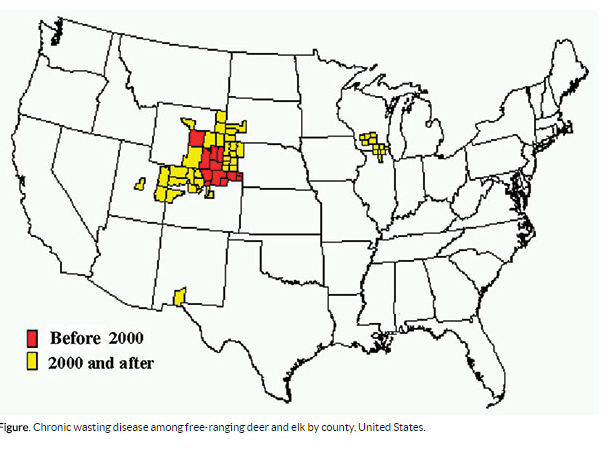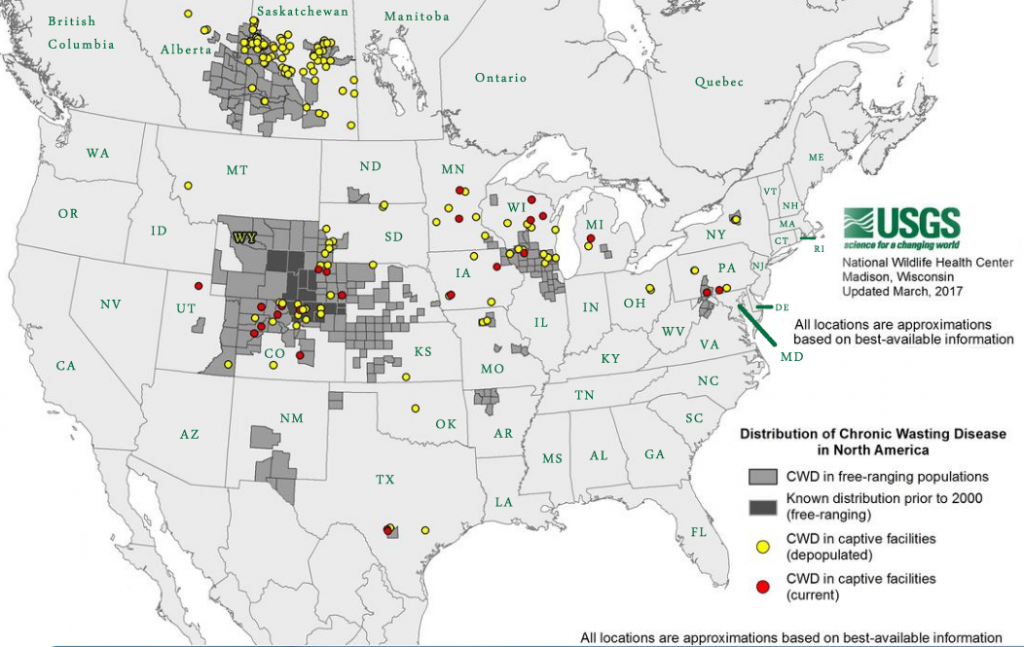CWD
Chronic Wasting Disease (CWD)
Prion Disease Background
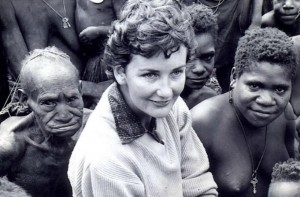
The first known instance of humans affected by prion disease was an aboriginal tribe found in Eastern Highlands Province of Papua New Guinea in the 1930s. One million natives were originally found. Of that one million, 11,000 were of the Fore tribe who had suffered for decades from an unidentified fatal illness called Kuru, killing up to 200 people per year.
The disease primarily affected adult women and children under eight years of age. The first symptom was difficulty walking. The victim would degenerate physically and mentally within a year, becoming unable to move from the floor, feed themselves, or control their bodily functions.
Anthropologists studied the Fore culture for decades, but it wasn’t until the early 1960s that an answer was found by Shirley Lindenbaum, a medical anthropologist with the City University of New York. The Fore felt that allowing insects or worms to consume the bodies of their dead loved ones was unloving, so the women cooked and ate those bodies. Only adult women were to partake, since they were the ones best able to withstand the dangerous spirits of those bodies, but occasionally a child was offered a bite. Young boys moved in with the men of the tribe early in life, so were seldom exposed. The Fore tribe stopped this funeral custom in the 1950s, but the disease can take decades for symptoms to develop. 1
Years later, another group learned that the disease was “not a virus — or a bacterium, fungus, or parasite. It was an entirely new infectious agent, one that had no genetic material, could survive being boiled, and wasn’t even alive.” The Nobel Prize in Physiology or Medicine 1997 was awarded to Stanley B. Prusiner “for his discovery of Prions – a new biological principle of infection”. 2
BSE
BSE (bovine spongiform encephalopathy) is a progressive neurological disorder of cattle that results from infection by an unusual transmissible agent called a prion. The nature of the transmissible agent is not well understood. Currently, the most accepted theory is that the agent is a modified form of a normal protein known as prion protein. For reasons that are not yet understood, the normal prion protein changes into a pathogenic (harmful) form that then damages the central nervous system of cattle.
Research indicates that the first probable infections of BSE in cows occurred during the 1970’s with two cases of BSE being identified in 1986. BSE possibly originated as a result of feeding cattle meat-and-bone meal that contained BSE-infected products from a spontaneously occurring case of BSE or scrapie-infected sheep products. Scrapie is a prion disease of sheep. There is strong evidence and general agreement that the outbreak was then amplified and spread throughout the United Kingdom cattle industry by feeding rendered, prion-infected, bovine meat-and-bone meal to young calves.
The BSE epizootic in the United Kingdom peaked in January 1993 at almost 1,000 new cases per week. Since then, the annual numbers of BSE cases in the United Kingdom have dropped sharply— 3
- 2 cases in 2015
- 11 cases in 2010
- 225 cases in 2005
- 1,443 cases in 2000
- 14,562 cases in 1995
CWD
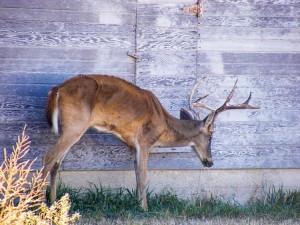
CWD (Chronic Wasting Disease) is a transmissible spongiform encephalopathy (
The disease was originally described in captive animals 35 years ago in Colorado. However, over the last five years, CWD has been detected in wild herds in several surrounding states and Canada. 4
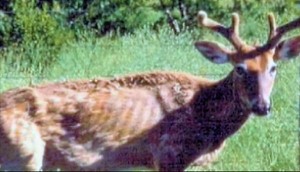 Clinical manifestations of CWD include weight loss over weeks or months, behavioral changes, excessive salivation, difficulty swallowing, polydipsia, and polyuria . In some animals, ataxia and head tremors may occur. Most animals with the disease die within several months of illness onset, sometimes from aspiration pneumonia.
Clinical manifestations of CWD include weight loss over weeks or months, behavioral changes, excessive salivation, difficulty swallowing, polydipsia, and polyuria . In some animals, ataxia and head tremors may occur. Most animals with the disease die within several months of illness onset, sometimes from aspiration pneumonia. 5
Could, say, hunters get sick from eating infected deer? That’s what researchers in North America, including Dr. Ermias Belay, are trying to find out right now.
“Chronic wasting disease in North America is spreading fast,” says Belay. The disease causes infected wild deer and elk to starve to death. “In early 2000, we had about three states that reported CWD in the wild in deer and elk. Today, that number is 21.”
Belay says the disease is “a little bit concerning” because, unlike mad cow disease and kuru, where infectious prions were concentrated in the brain and nervous system tissue, in an animal with chronic wasting disease, the misfolded prions show up all over the body. They can even be found in saliva, feces and urine, which could explain how the disease is spreading so quickly among wild deer and elk.
The CDC is working with public health authorities in Wyoming and Colorado to monitor hunters for signs of prion disease.
“Unfortunately, because these diseases have long incubation periods, it’s not easy to monitor transmission,” says Belay. He says he and his colleagues have yet to find any evidence that hunters have picked up chronic wasting disease from the meat of infected wild animals.
“And that, in itself, is good news for us,” he says. But, as with Kuru, it will take years — maybe even decades — before he can know for sure. 6
According to the National Institute of Health:
A critical concern in the transmission of prion diseases, including chronic wasting disease (CWD) of cervids, is the potential presence of prions in body fluids. To address this issue directly, we exposed cohorts of CWD-naïve deer to saliva, blood, or urine and feces from CWD-positive deer. We found infectious prions capable of transmitting CWD in saliva (by the oral route) and in blood (by transfusion). The results help to explain the facile transmission of CWD among cervids and prompt caution concerning contact with body fluids in prion infections. 7
CWD Spread from 2004 to 2017
